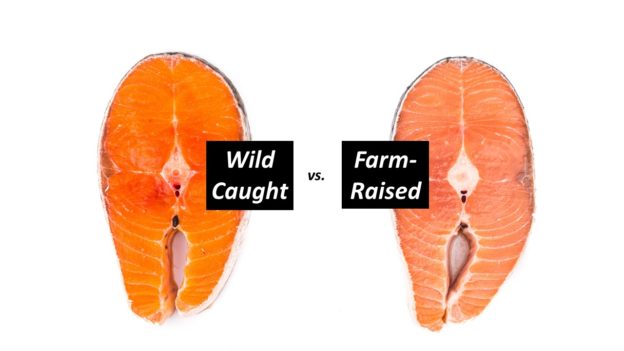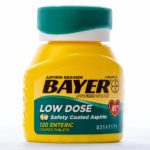By David Blyweiss, M.D., Advanced Natural Wellness
June 26, 2019
Corporate greed is messing with your food supply again.
Several weeks ago the first genetically altered salmon eggs arrived in the U.S. They were delivered to AquaBounty’s growing facility in Albany, Indiana where the first genetically engineered salmon in America will be raised.
What’s their big claim to fame?
These GMO salmon grow to full size in half the time it takes for conventional salmon. (This means the first frankenfish harvest could be ready for your dinner plate by the end of 2020.)
Why would anyone want to alter the perfection of natural, delicious, wild-caught Atlantic salmon?
Greed is the only answer. In this case, AquaBounty can produce twice as much product at about half the overhead cost. But you can bet your bottom dollar you won’t see any price reductions when it makes its debut in seafood departments across the country.
Open your arteries, improve blood flow for a new health miracle...
Did you know your circulatory system has over 60,000 miles of arteries, veins and other blood vessels, if stretched end to end?
But as you age, your blood vessels undergo changes, which may cause them to stiffen, thicken and get clogged.
GOOD NEWS! Doctors have now identified a “Miracle Molecule” inside your arteries that helps OPEN your arteries and IMPROVE blood flow.
It’s what Dr. Valentin Fuster calls it, "One of the most important discoveries in the history of cardiovascular medicine."To you, that means...
- Healthy blood pressure
- Sharper mind and memory
- Skyrocketing energy and muscular strength
- Increased pleasure and passion in the bedroom
- Improved circulation to every cell and organ in your body
Go here to discover a new natural way to significantly boost the levels of this miracle molecule in YOUR body NOW!
In the meantime, the controversy over genetically engineered salmon has been raging for years.
In a nutshell, the growth hormones from the salmon are combined with a promoter gene from ocean pout (an eel-like fish). This switches on the salmon’s growth gene year-round instead of just during warm weather.
As a result, these salmon carry higher levels of a growth hormone known as insulin-like growth factor 1 (IGF-1), which is linked to colon, prostate, breast and other cancers
Now, the FDA says the levels are safe. But the science to back that claim up just isn’t there. In fact, I would argue against it. I just don’t believe them anymore.
Here’s a perfect example.
Back in the 1990s, dairy farmers started pumping milk cows full of rBGH. This is an engineered variant of the natural bovine growth hormone produced by cows. The farmers used it to boost milk production.
Despite outcries from scientists, food safety groups and physicians like me, the FDA claimed it was completely safe. And boy was that a mistake! I told my readers that from the very beginning.
As it turns out, milk from rBGH cows has higher levels of IGF-1. And it didn’t take long to learn that IGF-1 survives digestion and promotes the growth of certain types of cancers. (Thankfully, today many dairy companies and retailers have gone rBGH-free.)
I am concerned that the FDA failed to learn their lesson from that blunder. Instead, they are getting ready to repeat it. Only this time, salmon will be the culprit.
Are You Suffering From...
- Love handles and a pot belly
- Romance that isn't what it used to
- Forgetfulness and inattention
- Low (or no) strength and endurance
- A sex drive that's shifted into neutral...or worse
If so...you may have Mature Male Burnout. Click here to discover more about this unique condition and what you can do about it.
The Toxic Side of Farm-Raised Salmon
You can probably guess that altered salmon is also farm-raised. And while you might see a “farm-raised” label on the package, chances are slim that you’ll know if it’s genetically modified.
That’s because labeling rules for these fast-growing salmon are vague. You might see the word “bioengineered” on the package. But it’s more likely the label will use a machine-readable code that you can’t decipher.
At the same time, farm-raised salmon is one of the most toxic fish you can buy.
It often contains polybrominated diphenyl ethers – or PBDEs. These are toxic industrial chemicals that were used as flame retardants in plastics and electronics for years. PBDEs can alter brain function and behavior, damage your DNA, affect thyroid function, and act as endocrine disruptors.
Farm-raised salmon also contain enormous amounts of polychlorinated biphenyls (PCBs). This is another type of industrial chemical that was once used in the electronics industry. And farm-raised salmon can contain as much as 16 times more PCBs than wild-caught.
As these accumulate in your body, they can open you up to liver cancer, thyroid problems, a weakened immune response and hormone imbalances. There is also evidence they increase the risk of type 2 diabetes, obesity and high blood pressure.
But that’s not the end of this disaster.
Farm-raised fish are packed together in tanks, pens and enclosures. So, parasites, viruses and disease are all big concerns. This means fish farmers have to kill those invasive and destructive organisms with the liberal use of antibiotics, fungicides and pesticides.
All of these toxic chemicals end up on your dinner plate… and in your bloodstream… every time you eat a piece of farm-raised salmon.
When you put all of this together, there is no conceivable reason to choose farm-raised salmon over fresh, wild-sourced Alaskan salmon.
And there is every reason in the world to always opt for the natural, wild Alaskan salmon that has sustained human health and life for millenniums.
Pursue your health. Live longer. And ALWAYS go wild.
SOURCES:
Giovannucci, E (2003). “Nutrition, insulin, insulin-like growth factors and cancer”. Hormone & Metabolic Research. 35 (11/12): 694–704. doi:10.1055/s-2004-814147. PMID 14710348
Furstenberger, G; Senn, HJ (2002). “Insulin-like growth factors and cancer”. Lancet Oncol. 3 (5): 298–302. doi:10.1016/s1470-2045(02)00731-3
Comments of Consumers Union on Genetically Engineered Salmon, Food and Drug Administration Docket No. FDA-201034-N-0001, Veterinary Medicine Advisory Committee Meeting. Sept 2010.
Ng CA, et al. Polybrominated Diphenyl Ether (PBDE) Accumulation in Farmed Salmon Evaluated Using a Dynamic Sea-Cage Production Model. Environmental Science & Technology, 2018; 52 (12): 6965.
Genuis SK, et al. Human Excretion of Polybrominated Diphenyl Ether Flame Retardants: Blood, Urine, and Sweat Study. Biomed Res Int. 2017; 2017: 3676089.
PCBs in farmed salmon. Environmental Working Group. Jul 2003.
Crinnion WJ. The role of persistent organic pollutants in the worldwide epidemic of type 2 diabetes mellitus and the possible connection to Farmed Atlantic Salmon (Salmo salar). Altern Med Rev. 2011 Dec;16(4):301-13.
Crinnion WJ. Polychlorinated biphenyls: persistent pollutants with immunological, neurological, and endocrinological consequences. Altern Med Rev. 2011 Mar;16(1):5-13.






